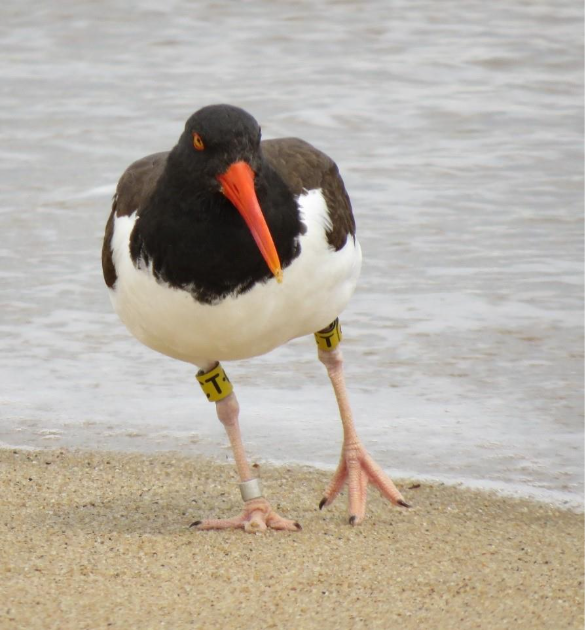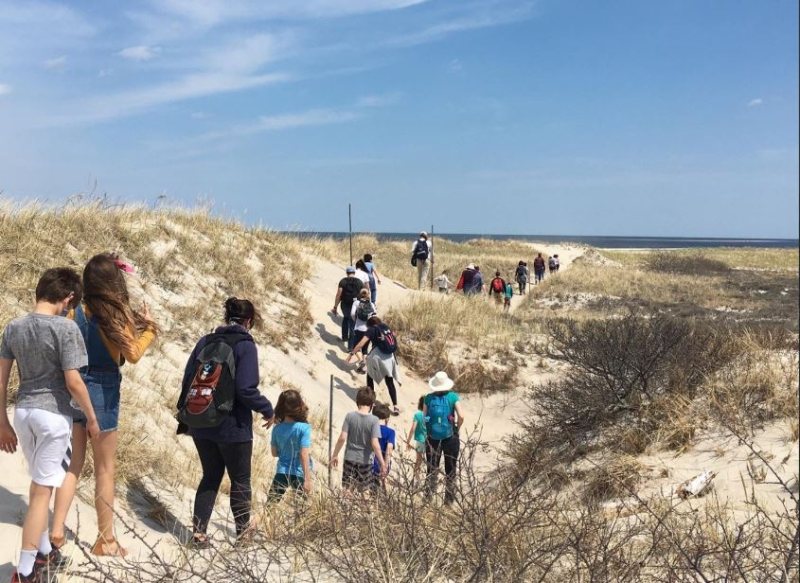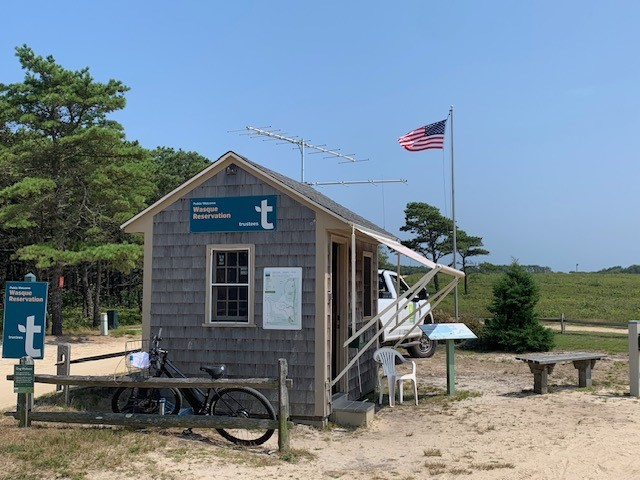
Wasque Reservation Gatehouse with new Motus array. Photo: Shea Fee
This past July, a new feature was added to the Wasque Reservation gatehouse. Two metal antennas were mounted on the small shed in an effort to aid in species conservation. This receiving station is one of many stations positioned around the globe that form an international research collaborative called the Motus Wildlife Tracking System. The Motus system is a global network that utilizes radio telemetry to track the movements of birds, bats, and large insects. Small, encoded radio transmitters are attached to animals of interest and are detected by receiving stations positioned across the landscape. If a tagged individual comes within 15 kilometers of a receiving station, it will be recorded. Tagged individuals act as representatives for their species and data recorded by receivers will piece together the route species take during large-scale movements like migration.
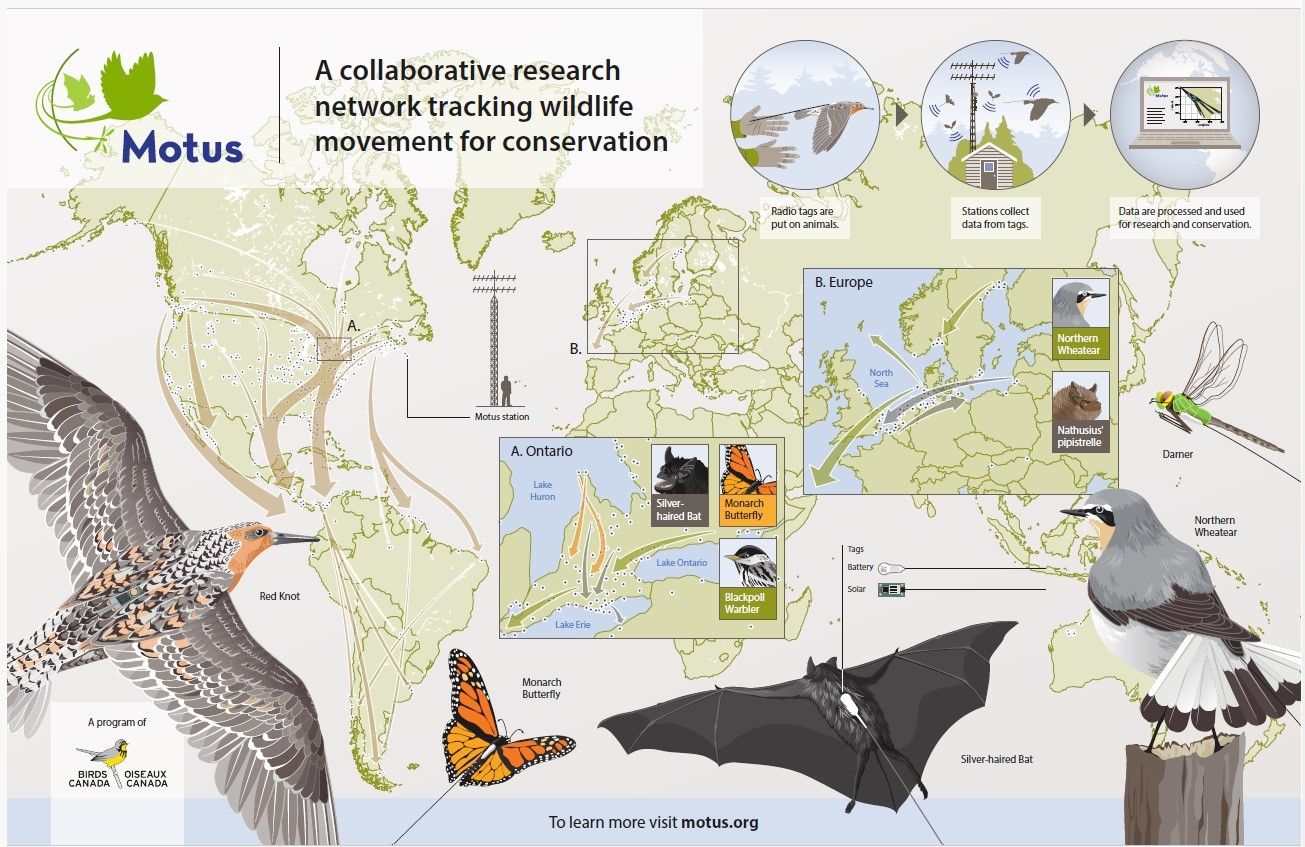
Depiction of how the Motus system operates. Courtesy of motus.com educational materials.
The initiative to establish a Motus receiving station at Wasque was led by shorebird researcher Rebeca Linhart, a PhD student out of the University of Rhode Island. Rebeca’s research focuses on the migratory patterns of Arctic-breeding shorebirds across the Western Hemisphere. Her primary aim is to understand how these shorebirds use coastal habitats during migration and the specific routes they follow to get there. Rebeca has spent countless hours capturing birds across their range in Atlantic Canada and New England during migration, and during the non-breeding period in Brazil. By tagging birds in multiple places across the hemisphere, she is able to track their southbound fall migration as well as their northbound migration in the spring. Upon capture, she collects biological and physiological information for each bird and affixes a lightweight radio transmitter to their backs. These data will help to inform habitat conservation measures across their range to help conserve our rapidly declining shorebird populations. Rebeca’s research targets several species including the ruddy turnstone, semipalmated sandpiper, and least sandpiper just to name a few.
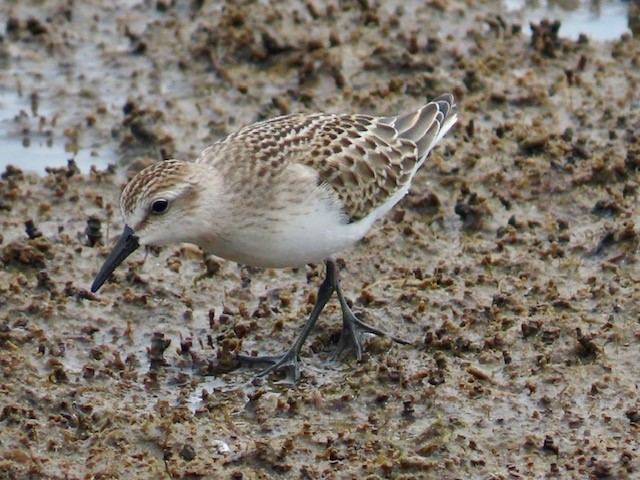
A young semipalmated sandpiper foraging the mudflats of Martha’s Vineyard. Photo: Shea Fee
One sunny late July afternoon, Rebeca, her very handy field assistant (who also happens to be her dad), and I assembled and mounted the Motus receiver on the gatehouse. Wasque was selected as an ideal site for recording the offshore movements of birds as they cross the Gulf of Maine and migrate south past Martha’s Vineyard and Nantucket. Thanks to our diligent habitat management, the low-lying vegetation of the reservation’s sandplain heathlands offers an unobstructed view of the ocean—a critical feature for receiving clear radio signals. The area southeast of the islands had been a blind spot within the Motus network, so installing a receiver at Wasque will enhance the resolution of the flight pathway dataset. The more stations a tagged bird registers at, the more detailed the picture of their journey becomes. The gatehouse was also chosen for its permanence, situated away from eroding banks, with the hope that the receiver will remain operational in perpetuity, continuously collecting valuable data for years to come. The radio signals captured by the array are logged in a small computer inside the gatehouse, and researchers can monitor the data in real time thanks to the Wi-Fi connection.
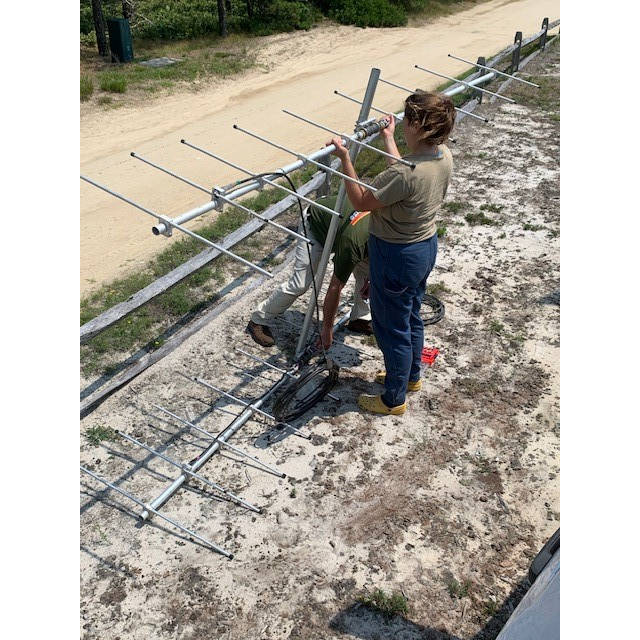
Rebeca and her father installing the array. Photo: Shea Fee
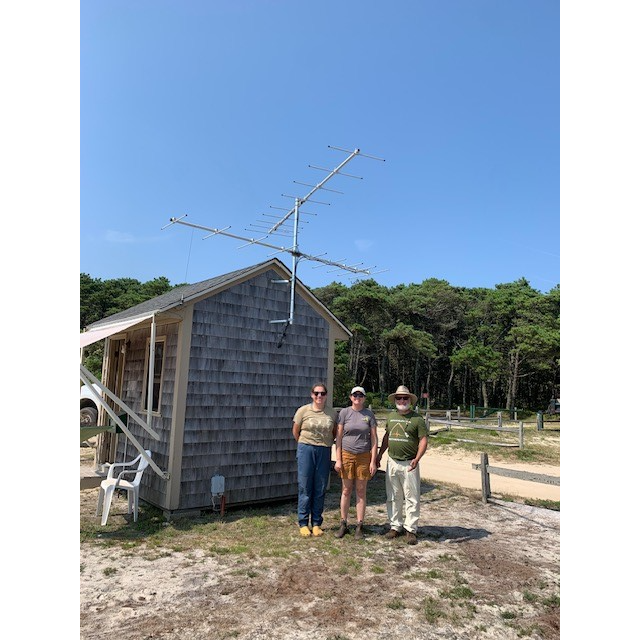
Successful Installation of the Tower.
According to the Motus website, over 800 receiving stations have been installed across the Americas, collecting data from nearly 200 species. The data gathered through Motus will ultimately offer deeper insights into the migratory journeys of these many species. Expanding the network to Wasque will enable researchers like Rebeca to better understand how shorebirds use the shores and waters around Martha’s Vineyard. As our understanding of how migratory shorebirds navigate this region improves, targeted action can be taken by land managers, conservationists, and policymakers to help preserve these rapidly declining species.

